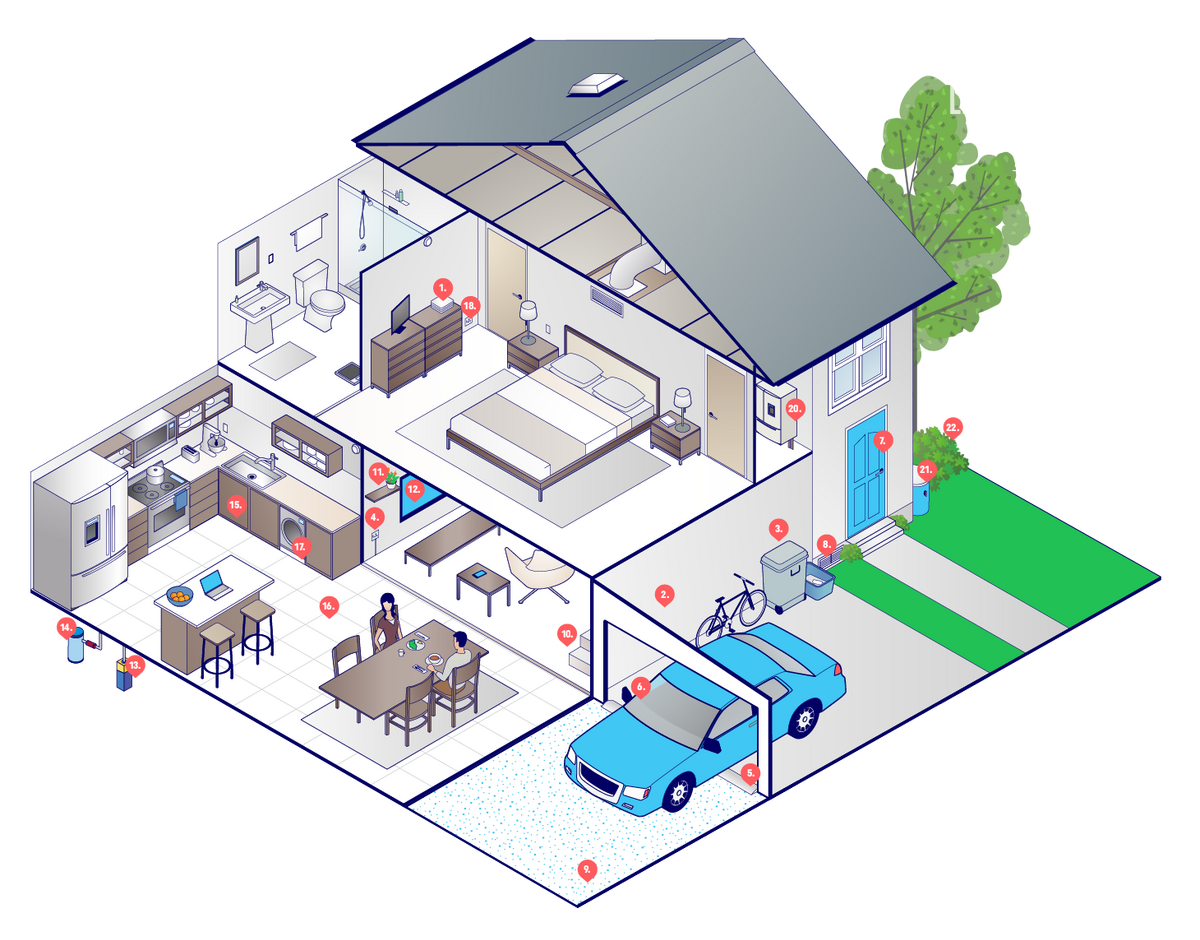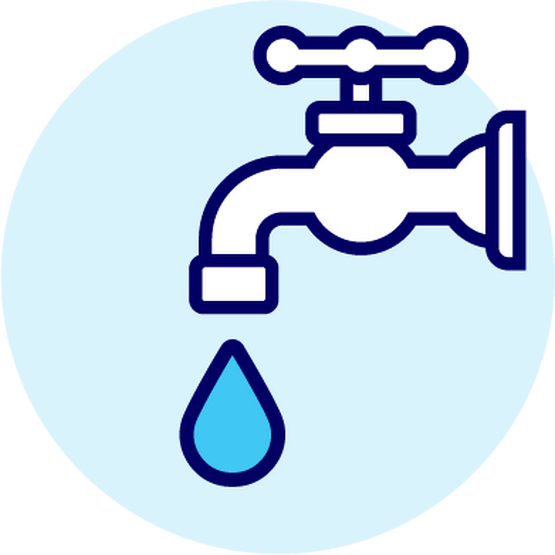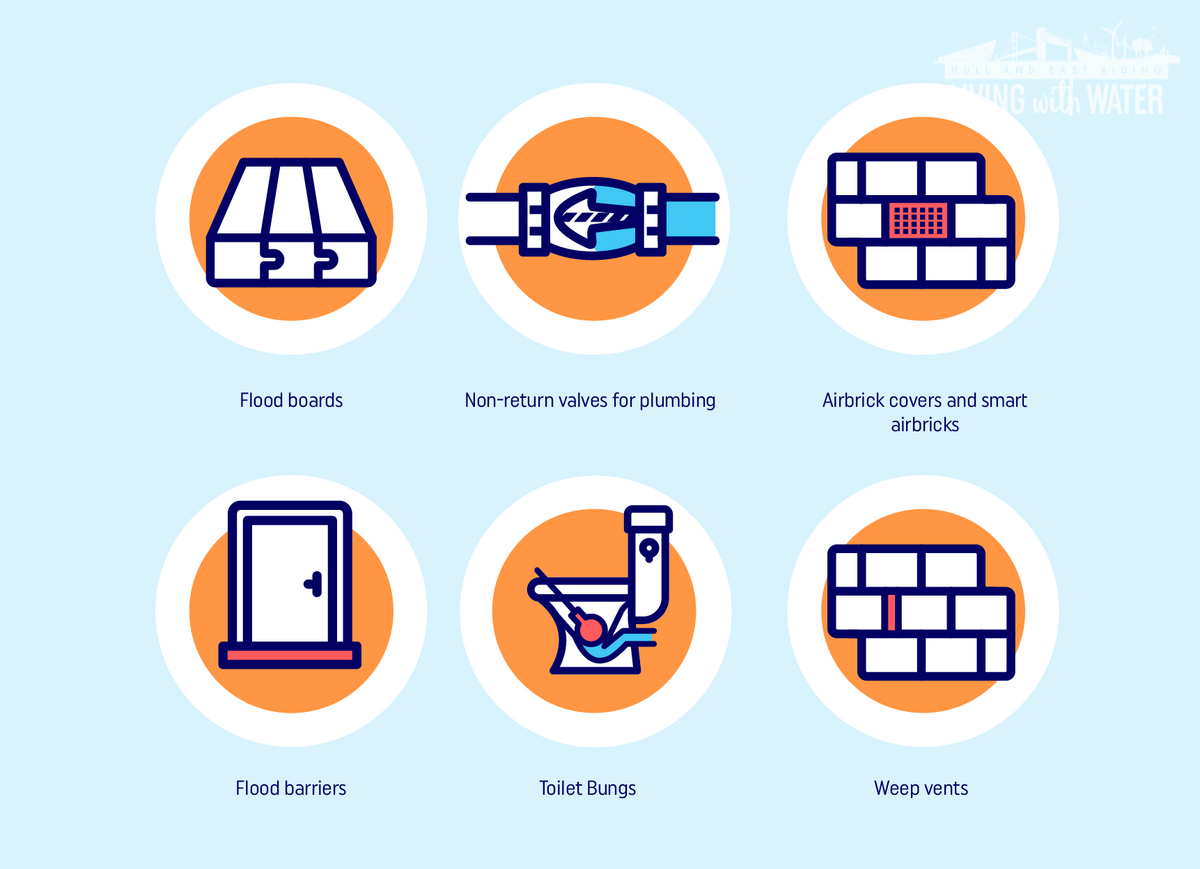Protecting your property

Whilst we cannot control flooding, there are measures we can take to help protect our homes.
From handy hints to help reduce surface water, to investing in property flood resilience products (PFR), find out about how you can minimise the impact of flooding on your home.
How to protect your property

1. Important items and documents upstairs or at height
2. Resilient plaster or plasterboard, laid horizontally
3. Easily-accessed storage in garage for flood barriers and blocks
4. Raised electrical sockets
5. Flood barriers to protect garages
6. Try to move vehicles to higher ground
7. Flood resistant front door
8. Seals an covers for service vents or self-closing air-bricks
9. Permeable surface on driveways, patios and paths
10. Bottom two stairs concrete with removable carpet
11. High shelves downstairs
12. Wall-mounted TV on ground floor
13. Sump/pump to remove water
14. Non-return valve is sewer pipe
15. Kitchen units made from metal/marine or plastic on legs
16. Tiled floors with waterproof adhesive and grout
17. White goods on raised plinths
18. Separate electrical circuit for upper and lower floors
20. Boiler moved to upper floor of wall-mounted on ground floor
21. Water butts and rain gardens to capturer run-off and reduce surface water
22. Planting trees and shrubs to capture run-off and reduce surface water

Soak it up
Have more green spaces in your garden and install water butts to stall the flow.

Bin it – don’t block it
Flushing wipes and other sanitary products down the toilet can cause blockages, so avoid anything other than pee, poo and paper! You can find out more information on avoiding blockages by visiting the Yorkshire Water website.
Visit Yorkshire Water
Use water wisely
By using water more carefully, you’ll be reducing use and creating more space in our drains – as well as saving yourself a few pennies at the same time.

Flood protection products for your home
Property flood resilience (PFR) products are used to adapt homes to make them both resistant and resilient to flooding.
Resistance: Tries to keep the water out up to a certain depth.
Resilience: Reduces the damage inside your home if floodwater gets in.
If your property has existing PFR measures, what condition are they in? Would they still work? Do you still have all of the parts?
Yorkshire Flood Resilience is a DEFRA-funded pathfinder partnership project working to raise awareness of PFR and its benefits. Hull and East Riding residents can find out more about PFR by visiting https://yorkshirefloodresilience.co.uk/


Is your property near water?
If you own property next to a watercourse, for example a river, culvert, brook or mill stream, you must maintain riverbeds and banks and not obstruct the water flow at any point.
Read guidance on the rights and responsibilities of owning a riverside property https://www.gov.uk/guidance/owning-a-watercourse
If your property’s next to a canal, contact the Canal & River Trust to check who’s responsible for maintenance: https://canalrivertrust.org.uk/contact-us/ways-to-contact-us
Contact the Environment Agency if you have questions about your responsibilities.
Environment Agency enquiries@environment-agency.gov.uk
Telephone: 03708 506 506 Monday to Friday, 8am to 6pm





